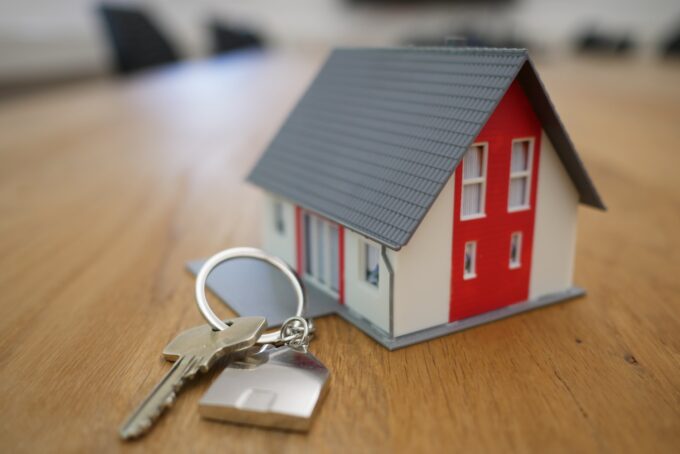We as a generation have been fed the narrative that owning a home is a major goal in the pursuit of the American dream. However, for Black Americans, obstacles in front of that dream such as discrimination and predatory lending practices tend to push it further out of reach.
A major cause for concern is the gap between Black homeownership rates and those of other groups. Just how significant is the gap? According to a report by Redfin, the Black homeownership rate in the United States was 44 percent in 2020, compared to 74 percent for white Americans.
Barriers Over the Years
Historically, Black homeownership has been impacted by systemic discrimination and exclusion as highlighted in a 2001 Brookings essay on homeownership, racial segregation, and policy solutions to racial wealth equity.
For example, during the Jim Crow era of the 1860s, Black people were prohibited from owning property in certain areas due to discriminatory housing policies. Even after the Civil Rights Act of 1968 prohibited housing discrimination on the basis of race, potential homeowners faced numerous barriers to homeownership, including redlining and racial bias in the real estate industry.
These barriers have contributed to the persistent gap in homeownership rates between Black and white Americans. While Black homeownership has rebounded in recent years, it remains stagnant compared to the 1970s.
This lack of progress is particularly concerning for Millennials and Gen Z, given the significant benefits of homeownership, including greater wealth accumulation and stability. One factor contributing to the lagging homeownership rates among Black people is the legacy of discriminatory housing policies and practices.
Redlining, for example, prevented Black Americans from obtaining mortgages in certain areas. As a result, many Black families were forced to rent or live in substandard housing. This lack of access to wealth has made it more difficult to accumulate the resources needed to purchase a home.
Additionally, the lack of affordable housing options has made it more difficult for many Black people to become homeowners. According to the National Low Income Housing Coalition’s 2021 Out of Reach report, the United States is experiencing a housing crisis. The report states that there is a shortage of affordable and available rental homes. This affects particularly those with lower incomes, with only 37 affordable and available rental homes per 100 extremely low-income renter households.
Another factor contributing to the lagging rates is the lack of access to wealth-building opportunities. Homeownership is one of the primary ways that Americans accumulate wealth. However, Black Americans have historically had limited access to this opportunity.
Additionally, in a 2019 Survey of Consumer Finances conducted by the Federal Reserve, the median wealth of Black families is less than 15 percent of White families. This wealth gap has made it more difficult for Black people to accumulate the resources needed to purchase a home.
Solutions to Increase Black Homeownership in the US
Despite these challenges, there are potential solutions to increase Black homeownership rates in the United States. One solution is to increase access to affordable housing through programs such as community land trusts and inclusionary zoning.
Community land trusts, for example, are nonprofit organizations that acquire land and develop affordable housing for low-income families. Inclusionary zoning requires developers to set aside a certain percentage of new housing units for affordable housing.
Another solution is to increase access to wealth-building opportunities for Black Americans. Examples could include homeownership counseling and down payment assistance programs. These programs can help individuals navigate the homebuying process and provide the financial resources needed to purchase a home. Additionally, addressing systemic discrimination in the real estate industry can help increase homeownership rates among Black people.
The history of Black homeownership in the United States has been marred by systemic discrimination and exclusion. However, there have been recent signs of progress. According to recent reports from the Census Bureau, the rate of Black homeowners is highest in states and metropolitan areas across the Southeastern US that have sizable Black populations as of 2021.
Additionally, the rate of Black homeowners has improved in 57 of the 63 metropolitan areas analyzed. We still have plenty of work to do to address the historic and ongoing disparities in the housing market. However, these recent gains are a small sign of progress toward a more inclusive housing market that Millennials can leverage to buy their first homes.
popular posts
- 1It’s Black Business Month, So Let’s Go Shopping and #BuyBlack!
- 2These Home Decor Items Will Instantly Make Your Space Look Outdated
- 3Black-Owned Home Decor Stores To Support Across the United States
- 4A Look Inside Elon Musk's Tiny $50,000 House
- 57 Black and Multicultural Designers To Follow For Design Inspo
Home

These 5 Kitchen Tools Will Up Your Culinary Experience
by Arielle Clay | January 19, 2023

I’ll Drink To That! Host a Black-Owned Wine & Spirit Tasting At Home
by Arielle Clay | January 20, 2023
FOLLOW ALONG ON INSTAGRAM
#homeandtexture
Find us on social for more home inspiration where culture, personal style, and sophisticated shopping intersect to help you create a home where you love to live.






